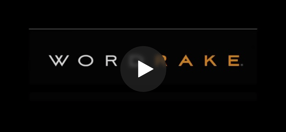How to Write in the Concrete
I owe everyone a huge apology. Two weeks ago, I told you about the summer I learned to type. I included this sentence in the original: “I could bang out 17 words a minute with no more that six or seven mistakes.” Mindy, who sends the Tips to you, thought I did it on purpose because the typo appeared in a sentence about making typos. And because she knows I have a weakness for irony, hidden jokes, and generally stupid, tongue-in-cheek stuff, she thought, "How deliciously ironic." Although still ironic, that was a real typo, but I thought, "What a great idea!" Then I thought, Even better, instead of that-which-should-be-than, let's make it sex-which-should-be-six. That way, nobody will miss the joke. HaHA!
I laughed so hard, I drooled. I was having a great time until your responses to that sentence nearly jammed our server: “Uh, Mr. Kinder, I think you meant six.” But I accept full responsibility for the misunderstanding: I completely forgot that in the digital age, we all need a laugh track to tell us what's supposed to be funny. Even if it isn't. Like a TV sitcom. But how could you do that in an article? Without Jennifer Aniston?
So I got to thinking about this, and I wondered, is it possible? And I thought, No! It can't be done! But then I talked to the WordRake engineers, and they said they would try, and, by golly, they invented a laugh track for written words! (These guys are amazing.) That way, from now on, you don’t have to figure out when to laugh. We do it all for you. (ha, ha.) And for a little extra, we will even laugh so you don’t have to (whoa ho ho). Now, when I go sideways entertaining myself, I will leave none of you behind. Just kidding; I’ll still lose some of you. (Laugh out loud.)
And now, with no segue whatsoever (chuckle), I present to you Rule 12 from The Elements of Style:
Use definite, specific, concrete language.
After we remove useless words (ha, no joke, that’s what WordRake does), we now have room to capture our reader’s imagination with vivid detail. Over 40 years ago, I read Strunk and White’s before and after examples of Rule 12; I still remember them, and I am typing them now from memory. (Smile, shake of the head. Amazing.):
vague: A period of unfavorable weather set in.
specific: It rained every day for a week.
Memorize those two sentences. Understand the difference. Strunk and White opine, “The surest way to arouse and hold the attention of the reader is by being specific, definite, and concrete.” (Scream, bend over, laugh hysteri . . . .) No, no, wait, I’m sorry, I have to reset this laugh track thing; that wasn't supposed to be funny. Here, let me try it again: Charlie Sheen. (Ahaha!) Okay, it's working again.) “The greatest writers," say Strunk and White, "are effective largely because their words call up pictures.”
When I taught seminars to lawyers on how to make their writing come alive, at about 4:00 in the afternoon, I would ask them all to close their eyes. Then I would tell them I was going to read four sets of words, and I wanted them to look at the screen on the back of their eyelids and tell me what came up on that screen. These are the four sets of words:
inherent dangers
improper and unreasonable conduct
lack of experience
substantial investment
After I read the words, I would say, "You may open your eyes. Anybody get anything?" No one would raise a hand, because the words do not "call up pictures." [Oh, wow, that's serious stuff, not funny, now what?] But one day, when I had read the words and asked if anyone had seen anything, a man in the back of the room shouted, "My ex-wife!" [Ha, ha, whoa, now we're cooking again!] I said, "Which one?" He yelled, "All four!" Later, I wasn't sure if he meant all four of the things I had read or all four of his ex-wives. [Double over in hysterics, slap knee several times, oh my, whew!]
Then I would ask them to close their eyes again and picture "Claude Dallas":
Claude Dallas is strong.
Can you see ol' Claude there? Of course not. [Dope slap.] That is telling. This is showing:
Claude Dallas once trudged five-and-a-half miles through knee-deep snow, shouldering the hind half of a bull elk.
Here, I would say, "Now you tell me about Claude Dallas. Yes, the woman in the back." "He smells bad." [Nod, grin, snort.] "Just kidding, but I see what you mean; that guy is really strong." We need to pick one or a few details to give our readers something to help them picture what we mean by strong. Then we get them involved, we get them to listen, to understand, to appreciate, to act, and to do what we want them to do. This silly little exercise is the art, the heart of persuasion. But words like lack of experience and substantial investment get them to do nothing but yawn. [Seriously.] Remember the trick: Use words people can see: We can't see improper and unreasonable conduct.
That’s the tip for this week. I hope the laugh track helped. If you still think you’re missing the humor, it sometimes helps to have someone read the tip to you, someone who will get the jokes, like your seven-year-old in the back seat. She will understand (chuckle). Seven-year-olds get me. (Smack forehead, wince, bark like a seal.)




